How Changing Just One Room Can Transform Your Life
Quick announcement before I dive in: next week I’m teaching a live, free workshop called The 5 Secrets to Designing a Home You Love. I only do this once a year! If you’d like to join, you can get the details and sign up right here.
You know that design can make a room more attractive. You also know that it can make a space more comfortable and functional. But what most people don’t realize is that design can go far beyond this. Change your home, and it might just change your life.
Every year, we invite Design a Home You Love students to share the story of the room they transformed while working on the course. It’s always inspiring, but this year I noticed something truly amazing. Students weren’t just talking about how beautiful their rooms were or how much more they used their spaces after redesigning them. Their stories were about big, dramatic changes in their lives — and these changes often began with just one room.
I suppose I shouldn’t be so surprised. After all, in Joyful I wrote about how adding color to downtown buildings in the depressed city of Tirana, Albania caused people to stop littering and start paying their taxes. And I shared how graffiti disappeared and attendance improved in NYC schools painted by the non-profit Publicolor. I know from more than a decade of research that design can have transformative effects.
But it’s one thing to see it happening in big, public settings, and another thing to witness it in the homes of my students, the very same ones I’ve worked with during the live sessions of the course. I had courtside seats for these transformations, and the stories blew me away.
How Changing Just One Room Can Transform Your Life
There were so many stories we loved this year, in fact, that it made awarding the prizes quite difficult. We named two runners up in addition to the grand prize, and five honorable mentions! We’re going to be sharing them in two parts, so look out for the second part of this series later this week.
These stories are living proof that a home isn’t just a roof over your head. It’s the foundation of your well-being. And investing in a home that supports you can have surprising ripple effects that touch many different aspects of your life.
I personally find it so inspiring to see real people making changes to real homes. In a world full of overstyled, unrealistic imagery, it’s important to see how people who might be our friends or neighbors really live — and live well. I believe so strongly that everyone has a natural intuition for what feels good in a space, and these stories are living proof that anyone can create a joyful home.
Can a Home Office Help You Find Work-Life Balance?
For three years, my student Uli had been completely preoccupied with work.
As an environmental campaigner at a large NGO, she has to think strategically to maximize limited resources. Work was on her mind around the clock.
When she signed up for Design a Home You Love, the demands of her work were taking a toll on her family life. She was constantly distracted, which made it hard to enjoy her time off. The idea of planning activities to do with her family felt overwhelming, so she just didn’t. Her spirits were low and her energy nonexistent, but even worse, she says, “I thought I wasn’t doing right by my family.”
Uli’s home office was a visual metaphor for her work life. “The chaos was overwhelming,” she says, “suffocating any motivation to get work done… When entering the room, I felt stressed, overwhelmed, and exhausted. [It] was the epitome of disorder – every corner filled with papers, electronics and bits and bobs.” It’s not surprising that she kept the door shut most of the time.

Uli knew she needed to change her relationship to her work. She decided to start by changing her home office.
One of the first things Uli noticed after starting the course was how the design of her space amplified the overall sense of disorder. The plain white walls and dull light made the clutter feel like the focal point of the room, and the lopsided layout made it hard to feel settled in the space.
So she painted the space a fresh, springy green, and was surprised to find the space looked brighter than it had when it was white. She moved the table to the center of the room, which also had a counterintuitive effect, making the room feel larger. Not only did this create a more balanced space, but it made room for other family members to come join her at the table for quiet reading and writing.
To deal with all the clutter, she added closed storage under the bench and a high, wall-mounted cabinet painted to blend in with the walls. (Uli used one of the prototyping techniques I teach in Module 1 to make sure the storage would work in her space, without feeling too heavy or oppressive.)

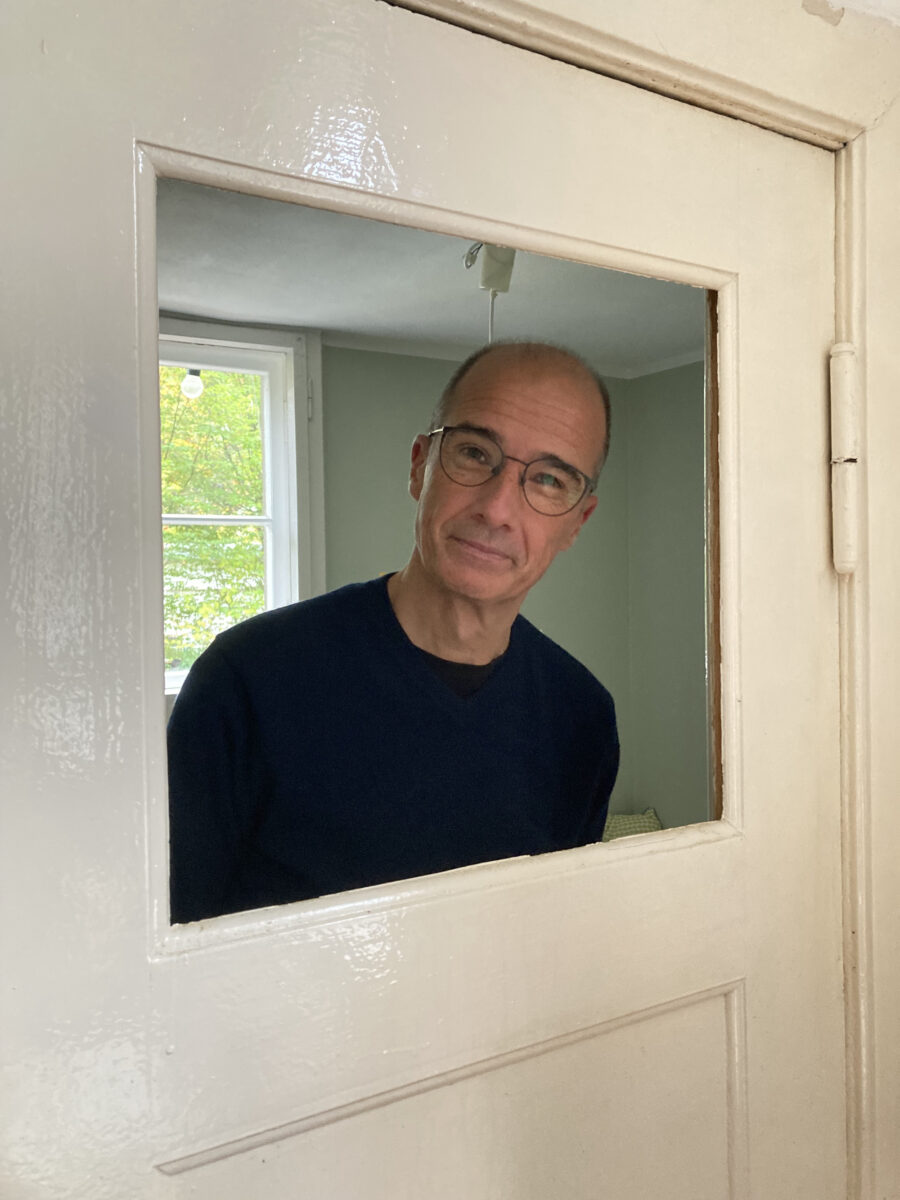
And in one of my favorite gestures, she also removed a panel from the door to the space, which lets more light in and makes her feel less isolated while she works. Plants, inspired by a greenhouse-style café in her Berlin neighborhood, help relieve work stress and add a lush texture.
“The effect was astonishing,” she says. “When the kids come home, they wave to me through the window or hold small notes against the glass. The room now feels connected to the rest of the home, [which] makes working in it so much more enjoyable.”
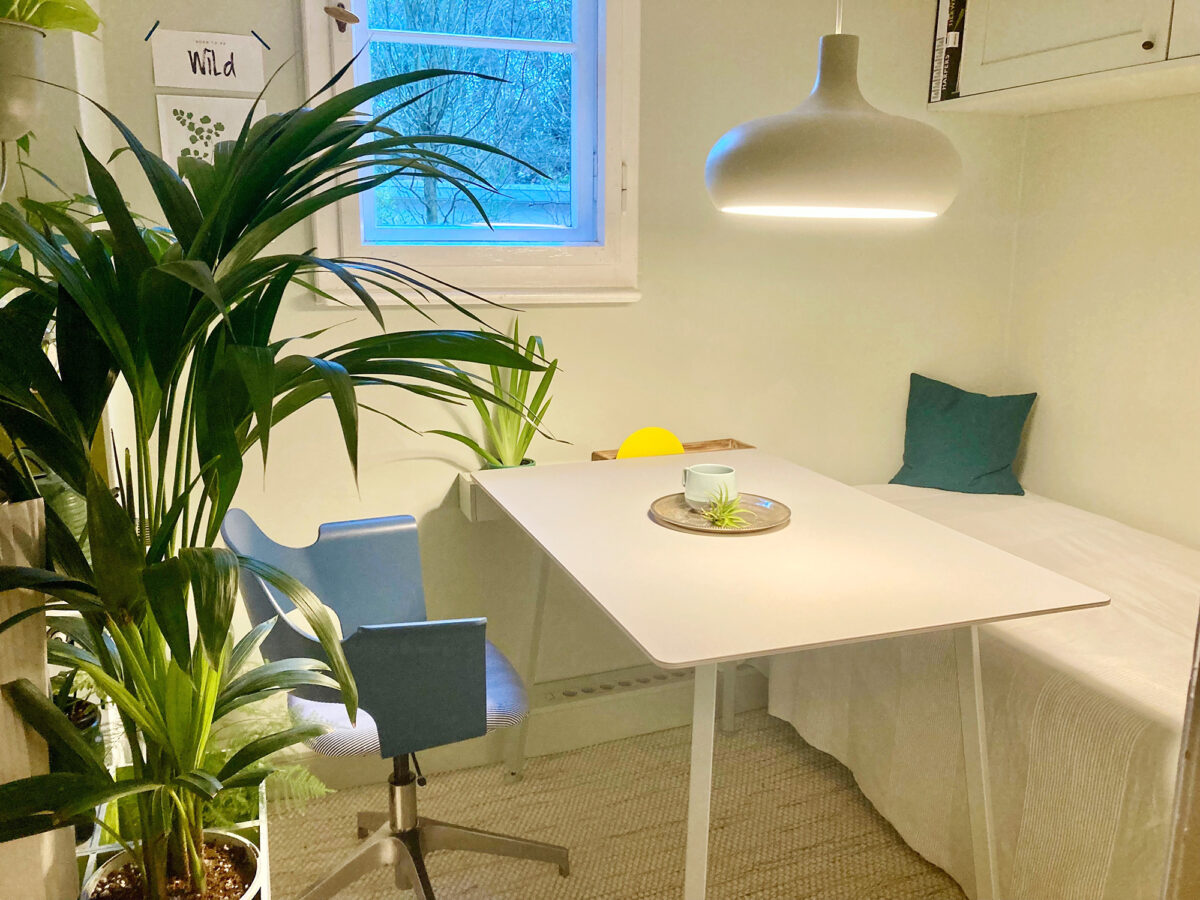
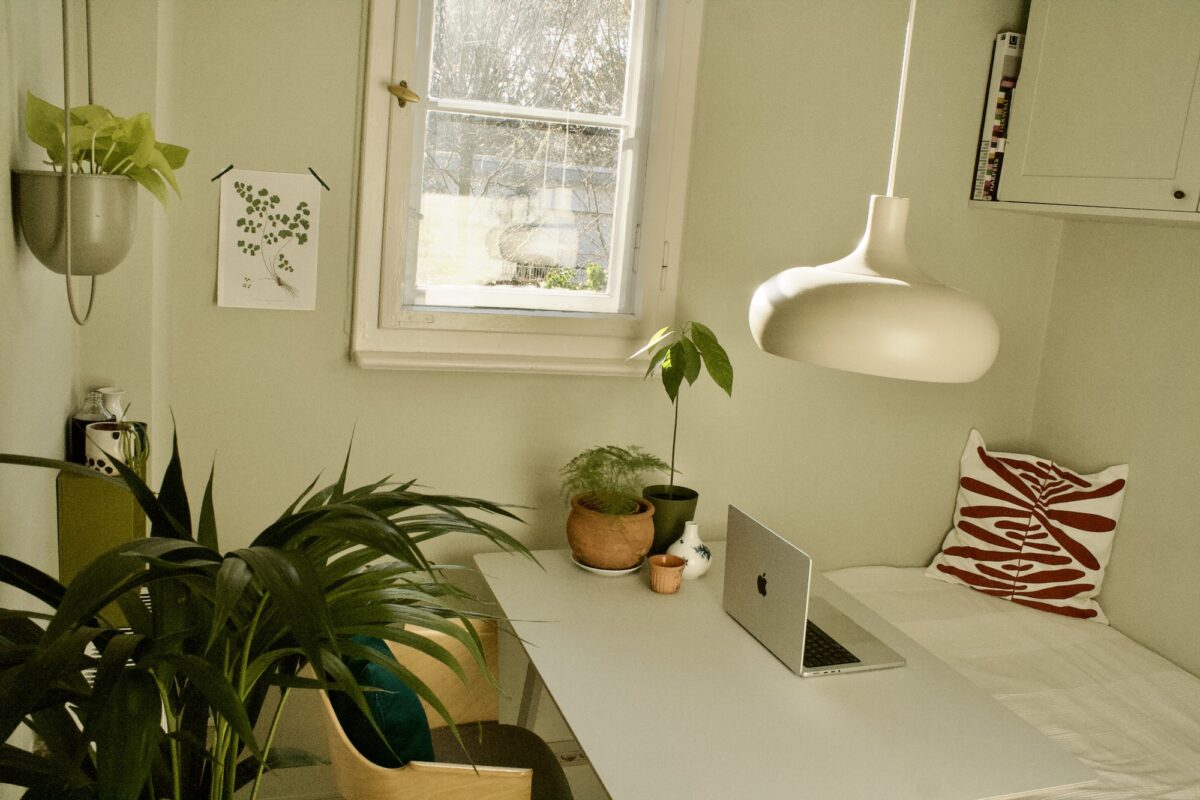
Uli’s changes were small and budget-friendly, but the impact has been profound. “Every day, I find joy in this room,” she says. She’s more focused and deliberate at work, while also being more present and engaged in her family. “I’ve started planning more for myself and my family again,” she says, “and I feel overall more organized and productive. Because I’m dedicating more time to my private life, my work life doesn’t play as big a role anymore.”
An example of this newfound balance is the way Uli’s home office can flex during non-work hours to accommodate more of her family’s needs. She chose a work table that matches her dining table, which has allowed her family to bring it out of the space when they host larger parties, creating one long table for guests. On Sundays, her husband reads the paper nestled among the palm fronds and twice a month the room hosts virtual band rehearsals.
Before Uli redesigned her home office, she said she always left the door to the space closed because it stressed her out so much to even look at her workspace. Now, she writes about the joy of seeing her home office from other parts of the apartment. “Even the view from the dining table is now more beautiful,” she says, “as we can catch a glimpse into the garden through the new window in the door.
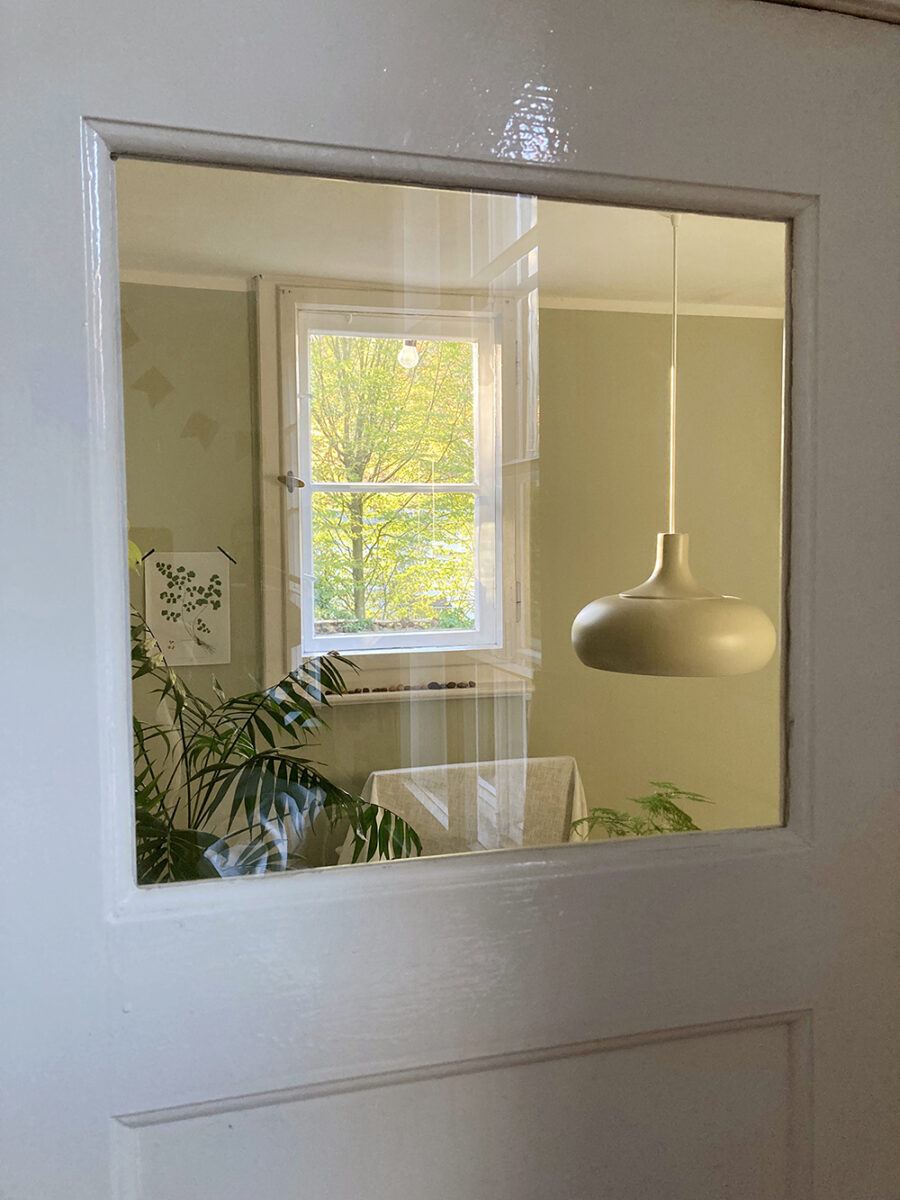
Uli also mentions that since finishing this project, she’s been giving more attention to her finances. She writes, “Until now, this was a topic that we always put off, but somehow we have found the energy and the right mindset now.”
This is something I often see when redesigning home office or household admin areas. When your workspace is disorganized, it’s easy to lose track of bills or important papers. You don’t want to sit down and balance a checkbook or do your taxes because the space feels so unsettling. It’s so stressful that you try to keep things out of sight, out of mind. Creating an orderly space to handle administrative tasks helps you focus and be efficient. You feel like you have your $%*# together, and you’re more likely to take the actions you need to stay on top of things.
When we’re burned out, it’s easy to blame ourselves and feel like there’s nothing we can do, except maybe change jobs. But Uli kept her job AND found beautiful new rhythm with her family. I felt so inspired by how her space played a role in bringing her life into balance, it even nudged me work on putting the finishing touches on my own.
Can a Bedroom bring a couple closer?
Anse built her house twelve years ago, and never managed to decorate her bedroom. With white walls and white curtains, she says it was “just a functional room without identity” and that it “felt more like a hospital room than a cozy space.” It was a place she and her husband slept, and that was about it.

Why did it take Anse and her husband so long to decorate their bedroom? Part of the reason was that they have different styles, and she worried that they wouldn’t be able to agree. “He’s more modern/industrial, I like more vintage/warm/wood,” she says, and she thinks “we were unconsciously afraid it would turn into a war and at least one of us wouldn’t be happy with the result.”
One of the things that drew her to the Design a Home You Love course was the partner workbook bonus that comes with the course. This guide steps you through the process of designing a home with someone else, and gives you exercises to find common ground even when you disagree.
Anse says her husband showed resistance at first. “Feelings, really?” was his reaction to the course’s process of figuring out how you want the space to feel before jumping into style. But, she says, he soon realized the value of taking this step first. “Despite our different styles we both wanted the same thing: a cozy space, to feel at rest and would give us the romantic vibes as if we were on vacation.” And, she says, “We immediately agreed on the joy-aesthetics: freedom, harmony and magic.”
(Sidebar to say that this might be my favorite moment of the process — when two people realize that they actually have a shared desire for their space that they can build on together. When we take a break from looking at furniture and paint colors, and start talking about how we want to live, we often realize we’re closer than we think.)
Anse and her husband’s initial agreement led to more alignment on their design choices: they both loved green as a focus color and jungle as a pattern for the walls. They found a cabinet they both liked and added fairy lights to the bed to create a romantic, intimate vibe.

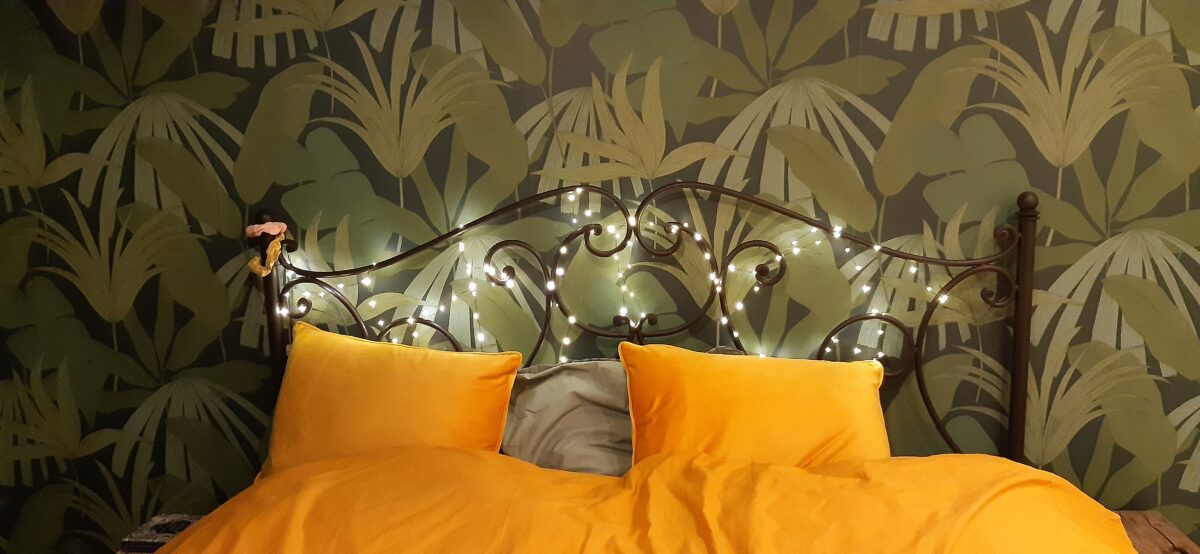
Anse reports that even though they’re not fully finished with their design yet, they’ve experienced some big changes in their daily routines:
We go to bed earlier. Instead of watching Netflix longer, we put those lights on and we read to each other (at the moment 50 words for snow), we talk, we cuddle… We sleep better because we have a better evening routine: we look forward to spend some time in our room before putting out the light to sleep and it helps us to wind down the day better. Also every morning when I wake up, I look around and feel happy, I start with journaling in bed and feel ready for the day before having tea and breakfast just because of the space.
Anse K.
As I read about Anse and her husband sharing more quality time together, I thought about how our relationships are really made up of the daily actions we take. It can be all too easy to take each other for granted and slip into a mindless rhythm of Netflix-and-chill. Yet even with small changes, Anse’s bedroom brought focus to the partnership and set the stage for more meaningful activities.
Anse also says that the design process itself reinforced the strength of their bond.
We remembered that in essence we love and want the same things. By answering the questions we rediscovered all the ways we think alike (and that’s a lot) instead of the way we are different (that’s actually only style, and even that is more flexible than we assumed from each other). We are together for 20 years now, and at that time, you think you know each other and don’t tend to ask that much questions anymore because it seems unnecessary. Off course we do know each other very well and we do know we are on the same spot for a lot of things but this process made us remember. Also we enjoyed the deeper conversations: it felt a bit like the beginning of our relationship when you want to know everything about your partner and ask a lot of questions.
Anse K.
So many of us are craving more connection, more intimacy in our most significant relationships, yet we don’t know how to get there. Amid the hustle and bustle, it feels hard to make time for each other. (And did I mention that Anse has three kids?) Then we wonder why the spark has fizzled and why we only ever seem to talk to each other about things that break around the house and coordinating to do lists.
Anse’s story offers a surprisingly easy roadmap to recapturing the spark. Focus on how you want to feel together and put a little attention toward your private space. You might find that an ordinary bedroom can easily become a “love nest,” one that nurtures your partnership and your romance.
Can Design Increase Your Financial Security?
When Katelyn started working on the course, her studio guesthouse was bare and empty, with bright green plywood floors that gave the space a kind of “disused rec room” vibe. She had visions of turning it into an Airbnb, so she set to work making the large empty space feel like a home away from home.
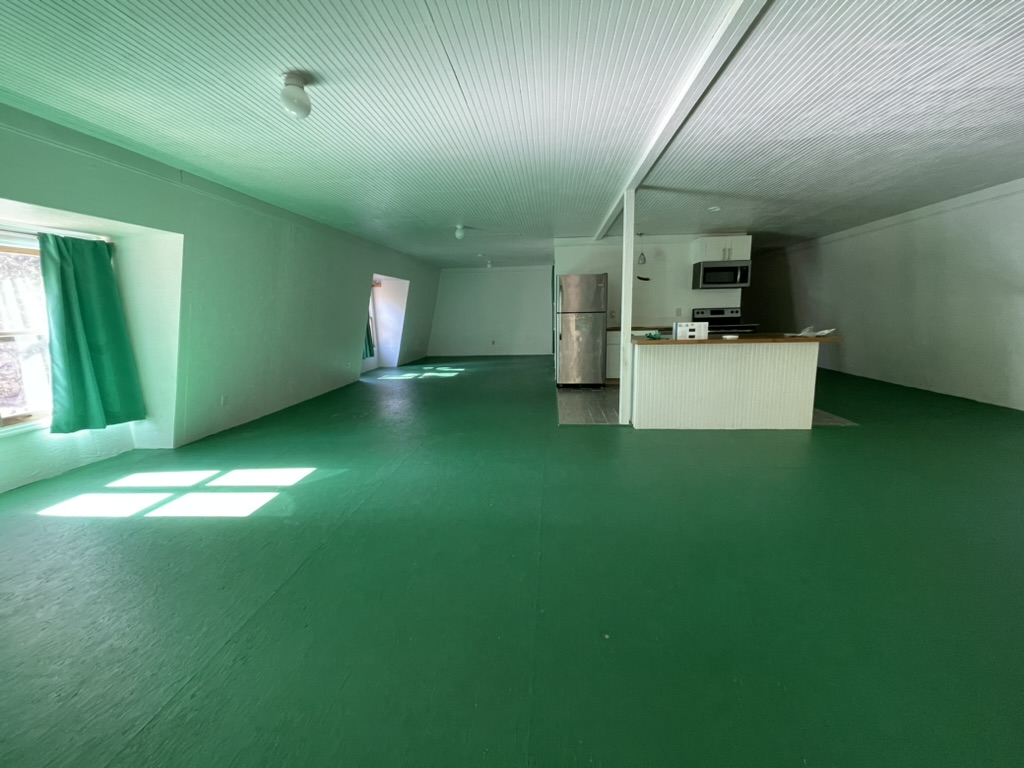
One idea from the Design a Home You Love course that resonated with Katelyn was the idea of creating “moments that matter” within the space. Moments that matter are a way to link physical design to the experiences you want to have in your home. In a big open space, focusing on these moments helps to define focal points and ensure the whole space gets put to good use.
“I created lots of little moments within the space for people to connect, unwind and recharge,” Katelyn says, highlighting the swing chair, loungey floor pillows, a whimsical record player shaped like a suitcase, and a front porch where people can take in the views of her private nature retreat.

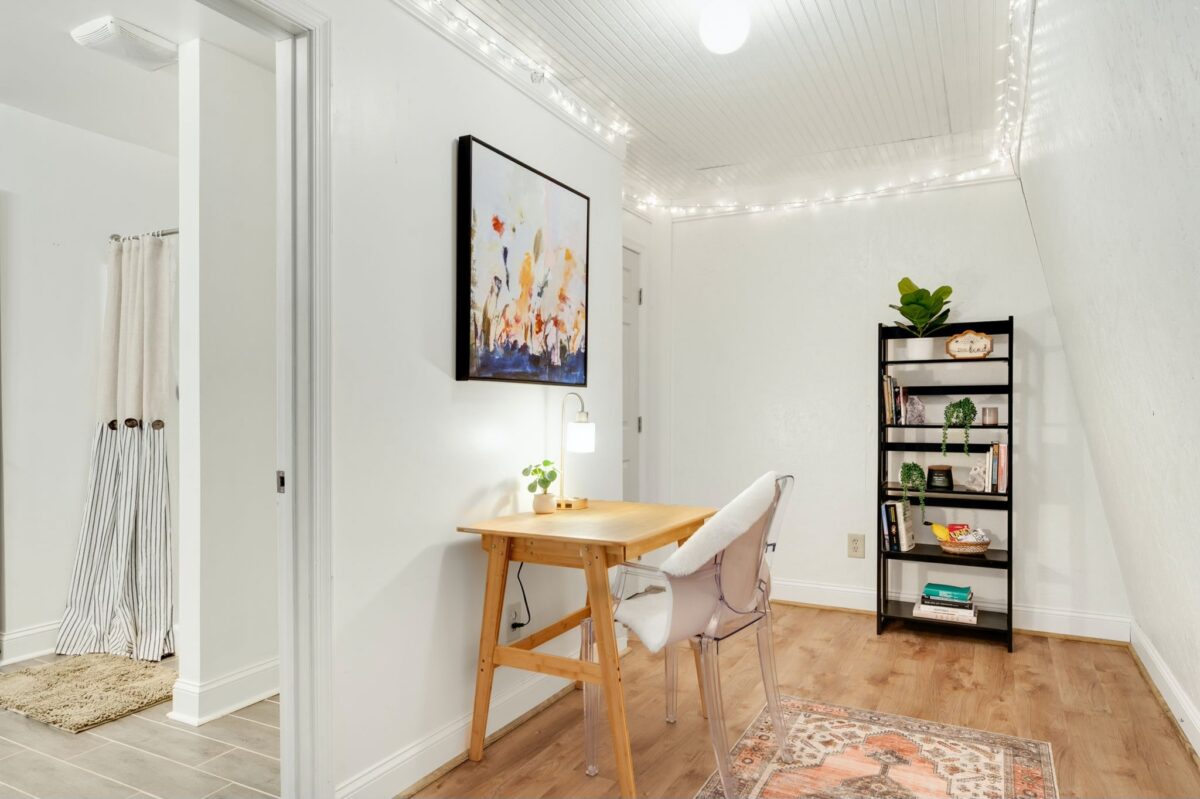
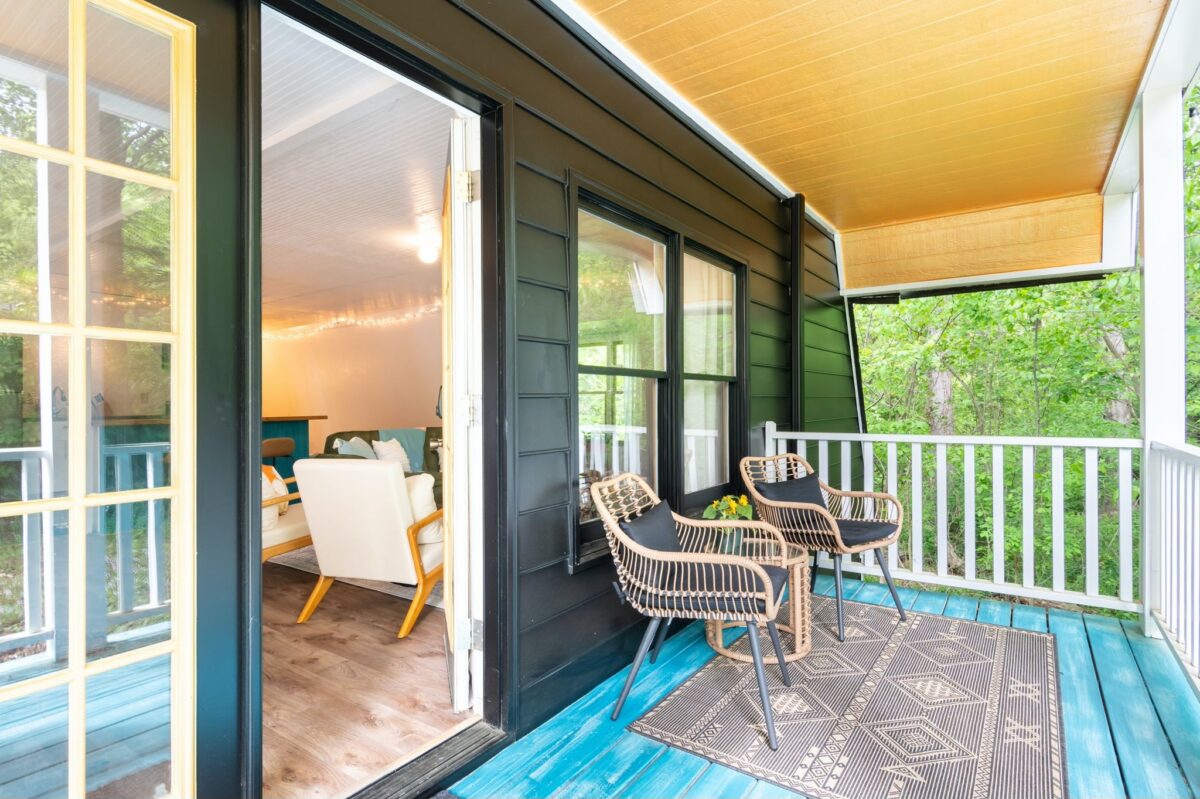
Then she layered in lots of plants, rugs, art, and pops of color to give the space energy and life. She also added twinkle lights running around the top of the space to bring an extra dose of joy.
“The space is a lot more bright and airy now,” says Katelyn, and you can immediately see this in her after photos. But what really caught my eye about Katelyn’s story was this: “We’ve received 50 5-star reviews on Airbnb and guests rave about how lovely it is,” she says. “We’ve been able to use that money to pay our mortgage and improve the property even more.”
In an economy where so many are struggling to make ends meet, I love how Katelyn used design to turn an under-used resource on her property into an extra source of income. And I was extra-inspired to see that she’s been using the process she learned in the course to transform additional spaces.
Check out how she applied these ideas to her newest Airbnb:
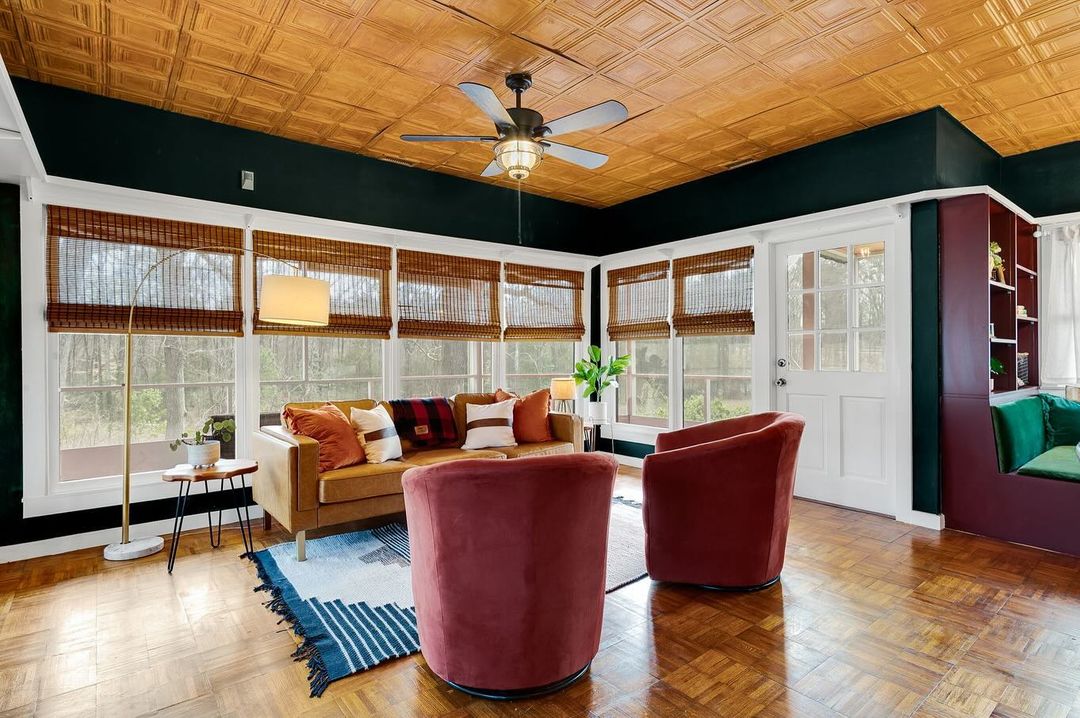

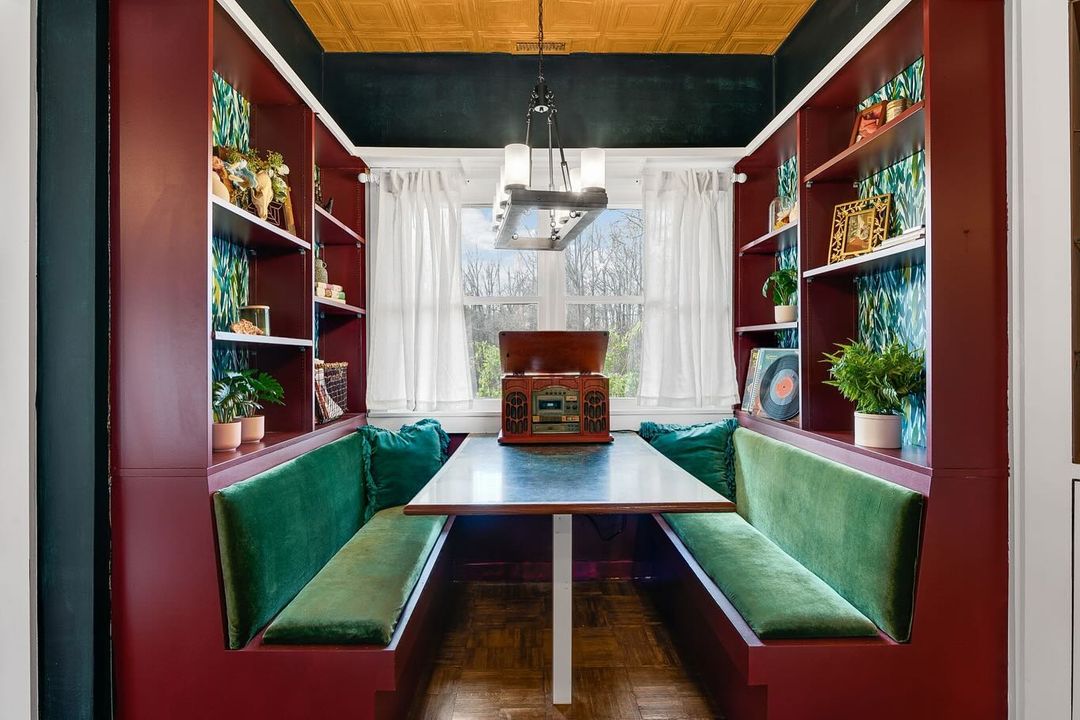
Many of my students have shared that they use the process from Design a Home You Love again and again. I love that Katelyn is doing this, and helping to increase her financial well-being at the same time. To find out more about Katelyn’s designs (or even book a stay), you can find her here.
Can a home Help You Make Better Memories?
If you’re a parent, people have probably said “It goes so fast” to you at least a thousand times. We all know this, and yet in the hustle and bustle of juggling work, childcare, and everything else, it can often feel hard to savor the little moments with our kids. Can design help?
When Briana started the course, she described her 5 year-old daughter’s bedroom as dark and dreary. The brown wood trim made the space feel heavy and dated, and the white walls felt impersonal. She wanted to create a space that was joyful for her daughter and one that she would actually be excited to spend time in.
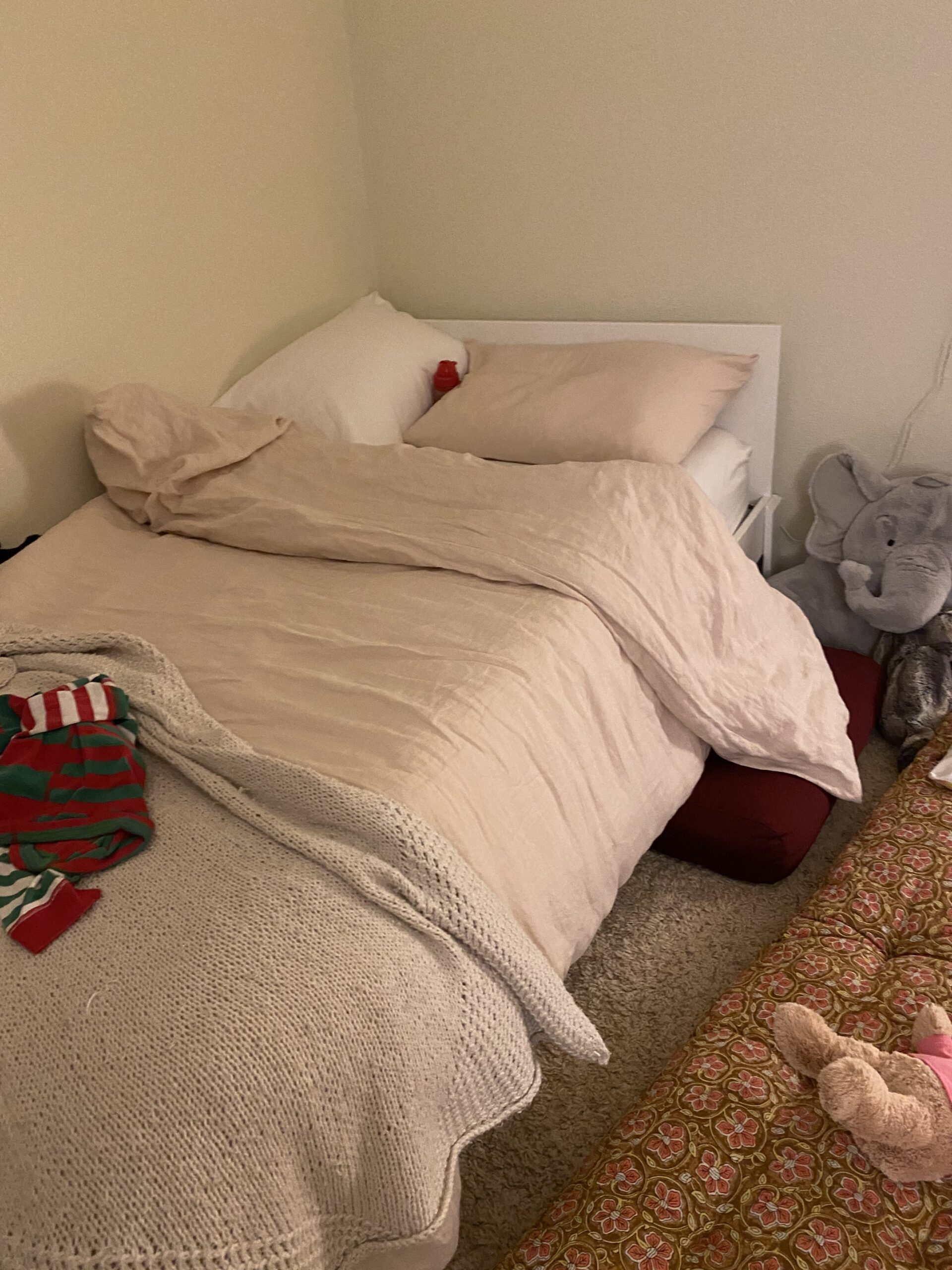

Briana’s focal point for the space was the moment of bedtime and storytime. She wanted to create a sense of coziness and magic during those precious moments of cuddling and connecting before sleep. She zoomed in on the aesthetics of transcendence and magic, and to help bring this feeling to life, she added wainscoting and wallpaper, personal art, and the coup de grace, a floral printed bed canopy.
“With a lamp or nightlight on, the space positively glows with magic,” Briana says. Her daughter, now 6, always wants someone to lie down with her while she falls asleep, and Briana reports that even eight months after finishing the room, “while she’s falling asleep I’m gazing around the room feeling cocooned and so satisfied with how it turned out.” Meanwhile, Briana’s son, age 3, burrows under the covers and doesn’t want to leave. I can’t help but think how much richer their whole family’s memories will be, nurtured by the daily ritual of cuddling together in a space that makes them feel cozy and loved.
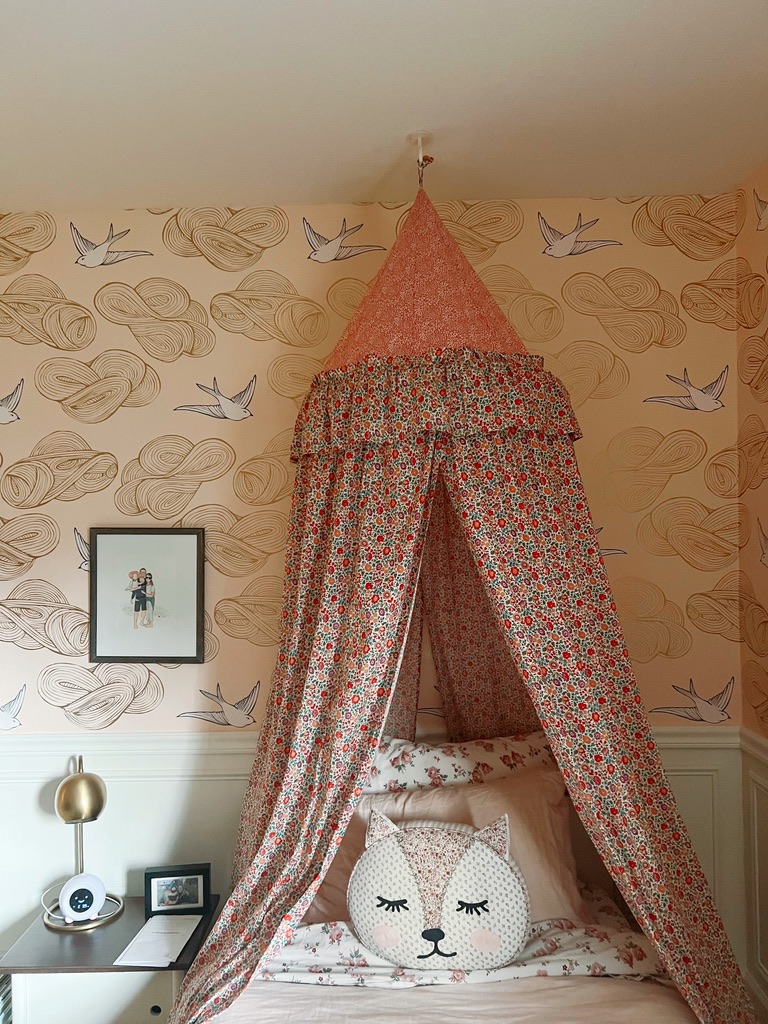

Now, Briana has plans to create two more moments in her daughter’s room: “one to display her own art, and one in her closet/dressing area” for getting ready. I especially love how this approach of focusing on “moments that matter” works for a child’s room, helping to orient a child in their space, and give them ownership and independence in a world where most things are dictated for them.
Can Your Space Change Your Life?
What this year’s stories remind me is that our homes often reflect deeper patterns in our lives. When a part of your home is out of balance, that often mirrors a part of life that’s out of balance too. Think of Uli’s chaotic home office or Anse’s unfurnished bedroom — looking at what part of our home is disorderly or neglected can be a way to shine a light on a part of life that could use a little more care and attention.
On the other hand, when you nurture a part of your home, you often end up nurturing a part of your life. Tend to your bedroom, and you create space for your partnership to flourish. Tame your home office, and it’s easier to bring work back into proportion with life. Create a magical space for your children, and you invite more of that magic into every day.
It’s easy while scrolling social media to think that design is about picking the right paint color or snagging a high-end sofa for a song on Facebook Marketplace. And while I do love poring over paint swatches and scoring vintage bargains, it’s important to remember that what design is really about is creating a life you love. Blue or yellow, modern or traditional — at the end of the day, it doesn’t matter.
What matters is feeling inspired and calm when you sit down to work, and the joy you feel when you hear your kids come home, knowing that you’ve been so productive you’ll be able to wrap up early and play with them.
What matters is feeling close to your partner. Not letting your romance get subsumed by school pickups and chores, but making space and time to enjoy each each other’s company daily.
What matters is that you feel resourceful and know that you have a skill you can count on to help provide for you and your family.
What matters is that even though children grow up too fast, you made space for magical memories, ones that nothing can take away from you.
What matters to you? How might your home help you do more of it?
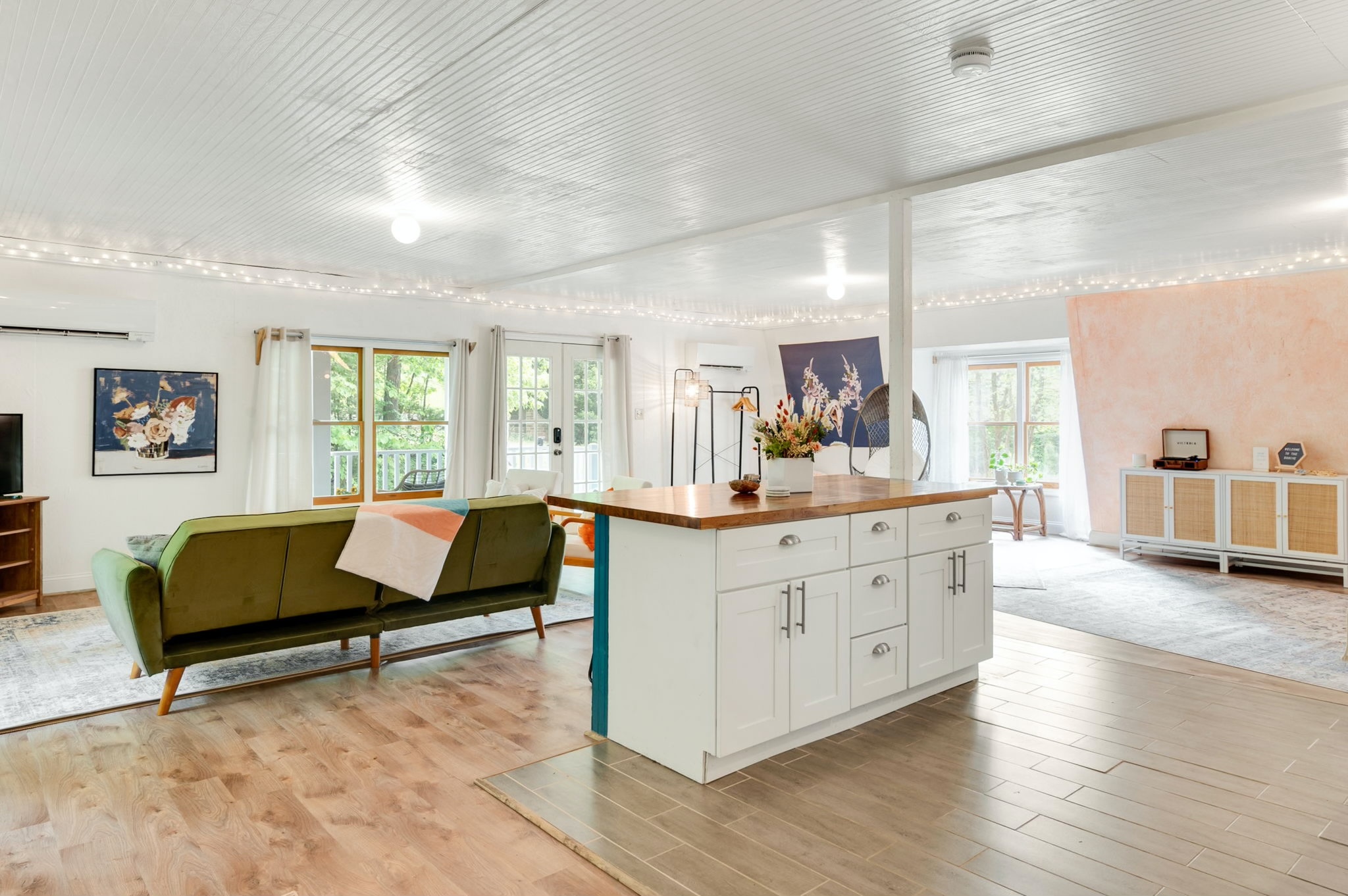

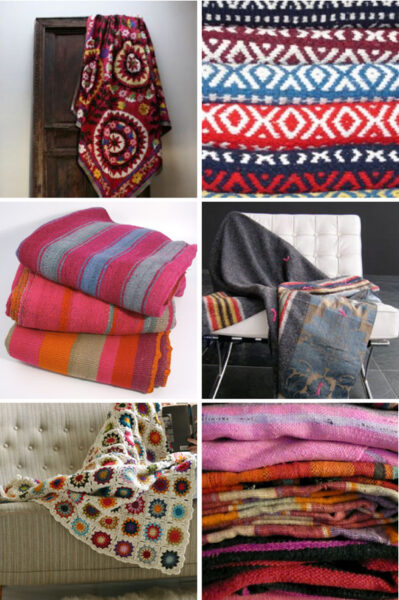


Leave a Comment